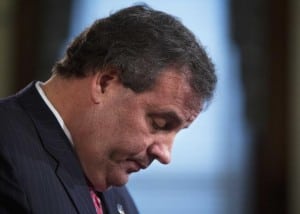Crises come in all varieties, but some are worse than others. The kind the emerge suddenly, but then evolve slowly are the worst, and the hardest to deal with. It’s those slow-burning crises that keep communicators and public affairs pros most on edge. And, practically, it’s those types of crises that require PR pros to go beyond having a “rapid response” plan and instead, be ready for new surprises as a crisis evolves.
So, what do PR people need to do when the boss is under siege and a scandal has emerged? What’s the communications strategy when investigations are proliferating? And what’s the message when some staffers have been fired and are subsequently subpoenaed?
Exhibit A for all of this is the widening traffic-jam scandal that’s engulfed New Jersey Gov. Chris Christie’s administration. Both federal and state investigations are now looking into whether a plan last September to close traffic lanes near the George Washington Bridge was politically motivated. Governor Christie has publicly denied any knowledge of such plans and, during his State of the State address earlier this month, apologized effusively for the scandal. But Christie and his team are hardly out of the woods yet.
- The Chris Christie scandal underscores some nettlesome problems PR pros face when their brand or organization is enmeshed in a crisis.
Crises as acute as the New Jersey bridge scandal are hard, if not impossible, to predict. At the same time, when a scandal does erupt, it’s the communicator’s responsibility to forecast what will most likely be a highly emotional and non-operational problem, said Jim Lukaszewski, president of The Lukaszewski Group, a firm that’s part of Risdall Public Relations.
‘GRAND STRATEGY’
Lukaszewski said there are 5 principles that PR pros need to follow when trying to navigate a scandal or crisis that shaking your brand’s foundation.
1. Stop the production of victims. Continuous victim production is what drives the media coverage, the public interest, the “emotionalization” of the situation, the commentary and criticism from 1,000 sources, and the reputation destruction.
2. Manage the victim dimension. This is what leaders and senior managers should be doing rather than hanging around and second-guessing the command center.
3. Communicate directly and frequently with employees, stakeholders, and those immediately affected.
4. Notify those indirectly affected. Be proactive with regulators, licensing authorities, neighbors, partners and other stakeholders who need to know what’s going on and who should hear from you, both promptly and directly.
5. Manage the self-appointed and the self-anointed—the news media and the new media—as well as those who “opt in on their own: The critics, the bellyachers, the backbench bickerers, the bloviators,” Lukaszewski said.
NO-SPIN ZONE
Of course, when a crisis takes on all the characteristics of a scandal, PR pros have to be closely aligned with legal counsel. That’s why it’s crucial that PR executives cultivate relationships with lawyers ahead of time so if there is a severe crisis, communicators have an existing relationship with the legal team and there’s less strain on efforts to develop a joint communications strategy in the vortex of the crisis.
“Legal informs the communications strategy, but doesn’t govern it,” said Howard Opinsky, executive VP of Hill+Knowlton Strategies and general manager of the PR agency’s Washington, D.C. office.
REALITY-BASED
The ultimate decisions in response to a crisis “have to be made by the CEO,” he added. “They’re getting advice from legal but any leader should listen to his communications counsel to get advice from a reputational point of view. You can win in a court of law and lose in the court of public opinion and vice versa.”
When grappling with an ongoing scandal, PR pros also have to deal with the specter of a “smoking gun,” or a piece of evidence that renders your existing PR strategy moot and changes the optics of the scandal. “When evidence comes out against you, you need to be as straightforward as possible,” Opinsky said. “It does you no good to deny reality.” PRN
CONTACT:
Jim Lukaszewski, [email protected]; Howard Opinsky, [email protected].
This story originally appeared in the January 27 issue of PR News. Read more subscriber-only content by becoming a PR News subscriber today.
‘Bridgegate’: What Would You Do?
It’s one of those questions that most of us hope we will never have to answer: What do you do when senior leaders of your organization step down amid allegations of wrongdoing? Since “Bridgegate,” no doubt most people are dusting off their crisis communications manuals and asking themselves this very question. Though every situation is different, I’ve pulled together the following four tips that every public relations professional should keep in mind:
• Get the facts. Okay, this one is pretty obvious but it is worth remembering that when questions arise about the behaviors of senior leaders your first responsibility is to get the facts behind what happened. Put yourself in the role of a reporter to better understand who was involved, what actually happened and why.
• Leave the echo chamber. Your best advisors may not necessarily be those who rush to your defense. Nor may other leaders within your own organization be best suited to dispense advice, given their relationships with those involved. If possible, seek counsel from outsiders who can look at the situation with a critical eye. They may not only bring a fresh perspective, but may also raise previously unasked questions and can provide a good gauge as to whether your response will resonate.
• Don’t blame your accusers. This goes hand-in-hand with recommendation #2. Try to understand the perspective of your critics and formulate your response accordingly. Remember that the long-term image and reputation of your organization (as well as your own personal brand) are at stake and though a flip response may serve immediate needs, you will be judged by how you manage the situation over the long-term.
• Don’t forget your own employees. Amidst a leadership scandal, senior leaders may initially be reluctant to communicate internally. Your job is to make sure that your internal stakeholders remain engaged, productive and understand what is being done to correct the situation. That means communicating often and ensuring that senior leaders are seen to be out in front of the situation. The worst thing that any organization can do is to turn its back on its own employees who, in the time of a crisis, could be your biggest advocates.
 Marc Monseau is founder of Mint Collective, a communications consultancy. Prior to creating Mint Collective, Marc was director of corporate communications at Johnson & Johnson. He can be can be reached at [email protected]
Marc Monseau is founder of Mint Collective, a communications consultancy. Prior to creating Mint Collective, Marc was director of corporate communications at Johnson & Johnson. He can be can be reached at [email protected]


Thanks for the tips. It just supports what I already know. Now if only I were allowed to actually do my job…